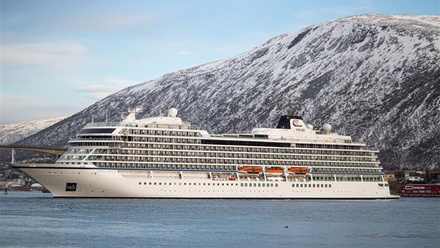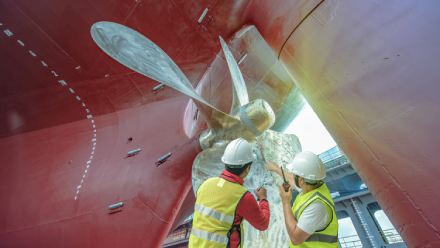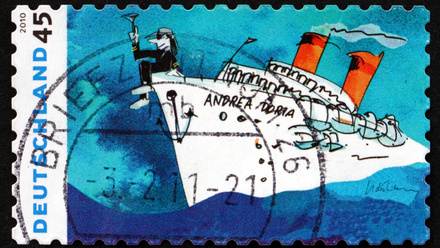Reducing bow thruster drag to help decarbonisation
Trimming fuel consumption on cruise ships rather than full-scale adoption of alternative fuels the aim of new research.
As the International Maritime Organization’s (IMO) decarbonisation targets loom ever closer, and concerns about the availability and costs of green fuels continue to weigh on the industry, there’s growing impetus to address the demand side to cut emissions. Compared to large-scale ideas like hydrogen-fuelled ships or onboard carbon capture, energy efficiency measures that lower fuel use attract less attention. Yet add those tweaks together and it’s possible to make some meaningful dents in a vessel’s fuel burn, simply by shipping smarter.
Scrutiny of every aspect of a ship can scope out new ways to reduce fuel consumption. New research from shipbuilders Fincantieri and classification society DNV, for example, has focused on how to reduce drag induced by bow thruster tunnels on cruise ships.
These thrusters are mainly used for crabbing – moving the ship sideways in port – which means that outside certain navigational settings when they might be used for heading realignment, the thrusters remain passive for much of the voyage. A cruise ship can have up to five bow thrusters, and it has always been assumed their impact on the hull shape increases hull resistance. Traditionally thruster tunnels are covered by a simple metal grid or, on naval ships, shutters that close the opening completely when the thrusters are not in use, but this solution adds weight, complexity and cost.
Fincantieri developed several concepts to minimise thruster drag and brought in experts from DNV to investigate the hydrodynamics by using advanced computational fluid dynamics (CFD) on a virtual hull model. The joint CFD work confirmed significant turbulence in the conventional thruster tunnel configuration, both around the tunnel edges and inside the tunnel. What’s more, the traditional grid design was aggravating the problem.
The team realised that rather than a complete closure of the thruster tunnels, it was enough to cover the forward one-third only. Fincantieri’s resulting patent-pending solution consists of a specially designed grid and a hinged, slotted deflector covering the forward portion of the tunnel, which can be swung open when the thruster is activated. This reduces the added turbulence downstream of the tunnels while requiring very little extra steel.
More than just energy saving
Importantly, this solution also helps reduce noise and vibration on board, which is a major consideration for cruise ships because of the importance of passenger comfort. Like all the best designs, its hallmark is simplicity, which means lower risk, reduced maintenance and less weight, and it can be incorporated into newbuilds or retrofitted.
“Fifteen years ago, the prospect of saving one or two percent of fuel costs wouldn’t have attracted much interest, but the situation has changed significantly,” notes Dr Cosmin Ciortan, Principal Specialist and CFD expert at DNV.
Emissions are not just an environmental negative, they’re increasingly a risk to the financial bottom line. In a world of binding targets and carbon trading schemes, emissions carry financial implications so that even once negligible fuel savings can have a material impact on margins.
DNV has been putting its CFD and modelling expertise to work across the cruise industry, where new IMO rules, increasing scrutiny of the industry’s environmental impacts and the need to consider commercial imperatives and passenger comfort create some complex operating parameters. Using these techniques, they helped optimise hull design for 10 percent less fuel use than the starting design for Hapag Lloyd’s expedition cruise vessels.
It may not be headline-grabbing innovation, but every little helps when it comes to moving the needle and decarbonising these high-profile voyages.
Join IMarEST’s Ship Energy and Environment Special Interest Group to discover more about similar topics.
Tell us what you think about this article by joining the discussion on IMarEST Connect.
Image: Hapag-Lloyd’s MS Europa 2 cruise ship; credit: Shutterstock.






